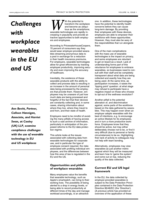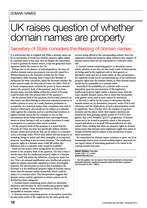Description
Although Bard claimed that it had modified the gun to make it easier to load and unload, in the court’s eyes this
was belied by the company’s internal documents, which indicated that the modifications “had no effect on gun or
needle performance.” Given the “substantial evidence” that the “real reasons” for the modification were to
increase the cost of entry and exclude rival suppliers of replacement needles, the court found the modifications to
constitute “restrictive or exclusionary conduct,” in violation of the antitrust laws.
In Microsoft, the D.C. Circuit similarly condemned Microsoft’s integration of Internet Explorer, finding that
Microsoft failed to demonstrate the redesign achieved “any integrative benefit” or served any “purpose other
than protecting its operating system monopoly.” At the same time, the court reversed the district court’s finding
of an antitrust violation based on Microsoft’s introduction of a modified Java Virtual Machine, finding that while
Microsoft may have created incompatibilities, it also allowed applications to run more swiftly.12
More frequently, courts consider the benefits not of the challenged innovation itself, but of the associated
conduct—for instance, in product hopping cases, the treatment of the legacy drug. In Actavis, the court rejected
the asserted justifications for pulling the older product—such as supply chain and marketing savings, permitting
the company to focus on newer innovations—finding them pretextual in light of the evidence that the withdrawal
was actually done to force patients to switch to the new formulation.
The court also relied on other indicators of predatory conduct, including that by withdrawing the legacy product
the company had allegedly forsaken short-term profits for an anticompetitive end. This type of evidence could
become an even more important factor in future cases.
Key Considerations Going Forward
Innovation as a tool for exclusion has once again become a hot topic in antitrust, and with the New York
Attorney General’s recent high-profile win in the Second Circuit, additional litigation is likely.
One key piece of guidance that emerges from the case law is that so long as the legacy product remains available
to consumers, either from the monopolist or its rivals, the antitrust risk is lessened.
Keeping older products on the market may not always be required, but as the cases discussed above demonstrate, doing so may help defeat an antitrust claim. Prudent companies should also make it a point to emphasize the benefits to customers of new and improved products. While courts are reluctant to condemn innovative conduct, documents extolling the exclusionary effect of proposed new products are at the forefront in those cases where the plaintiff has prevailed. Counsel with clients outside the pharmaceutical industry, as well as those in the industry would be wise to keep future developments regarding product hopping on their radars, whether to guide strategies to shield against antitrust challenges or as a potential sword to strike out against competitors’ conduct. Howard Morse is a partner in the Washington, DC Office of Cooley LLP. 12 5 CR Bard v. M3 Systems, Inc., 157 F.3d 1340 (Fed.
Cir. 1998). David Burns is an associate in the Washington, DC office of Cooley LLP. .
Keeping older products on the market may not always be required, but as the cases discussed above demonstrate, doing so may help defeat an antitrust claim. Prudent companies should also make it a point to emphasize the benefits to customers of new and improved products. While courts are reluctant to condemn innovative conduct, documents extolling the exclusionary effect of proposed new products are at the forefront in those cases where the plaintiff has prevailed. Counsel with clients outside the pharmaceutical industry, as well as those in the industry would be wise to keep future developments regarding product hopping on their radars, whether to guide strategies to shield against antitrust challenges or as a potential sword to strike out against competitors’ conduct. Howard Morse is a partner in the Washington, DC Office of Cooley LLP. 12 5 CR Bard v. M3 Systems, Inc., 157 F.3d 1340 (Fed.
Cir. 1998). David Burns is an associate in the Washington, DC office of Cooley LLP. .









